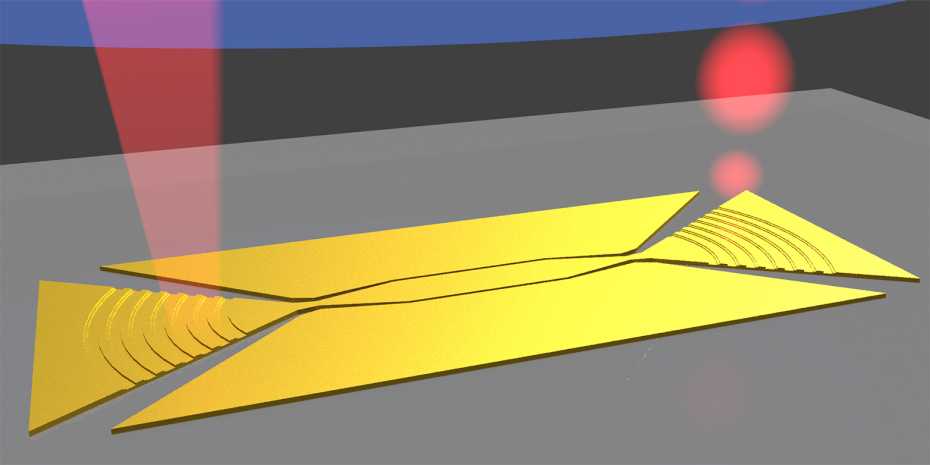Optoelectronics without glass...

ETH Zurich researchers develop plasmonic modulator made of metal
Researchers at ETH Zurich have developed the first opto-electronic circuit component that works without glass and is instead made of metal. The plasmonic modulator, which converts electrical data signals into optical signals, is smaller and faster than current modulators, and much easier and cheaper to make.
Two years ago, Juerg Leuthold (who led the recent project) and his colleagues developed one of these plasmonic modulators but the semiconductor chip still had various glass components. By replacing all the glass components with metallic ones, the scientists have succeeded in building an even smaller modulator that works up to highest speed.
"In metals, electrons can move at practically any speed, whereas the speed in glass is limited due to its physical properties," says Masafumi Ayata, a doctoral student in Leuthold's group and lead author of the study. In the experiment, the researchers succeeded in transmitting data at 116 gigabits per second. They are convinced that with further improvements, even higher data transfer rates will be possible.
The modulator prototype tested by the ETH researchers is made of a gold layer that lies on a glass surface. The scientists emphasised that the glass has no function. "Instead of the glass layer, we could also use other suitable smooth surfaces," says Leuthold. It might also be possible to use less expensive copper instead of gold for industrial applications. The important point is that only one metallic coating is required for the new modulators. "This makes them much easier and cheaper to fabricate," says Leuthold.
The researchers are already working with an industrial partner in order to put the new modulator into practice, and talks with other partners are in progress. However, Leuthold believes that further development may be required before the technology is ready for the market; for example, he expects that the current loss of signal strength during modulation can be reduced further.
For computers and autonomous vehicles
The new modulator could one day be used not only for telecommunications applications, but for computers as well. "The computer industry is considering using fibre optics to transfer data between the individual chips inside computers," says Leuthold. However, this would require tiny modulators "“ such as Leuthold and his team have developed.
Ultimately, it is also conceivable that the modulators could be used in displays "“ including bendable ones "“ and optical sensors, such as those in the Lidar system for distance measurement that are used in (semi-) autonomous cars.
'High-speed plasmonic modulator in a single metal layer,' by Ayata M et al.: Science, 2. November 2017
































